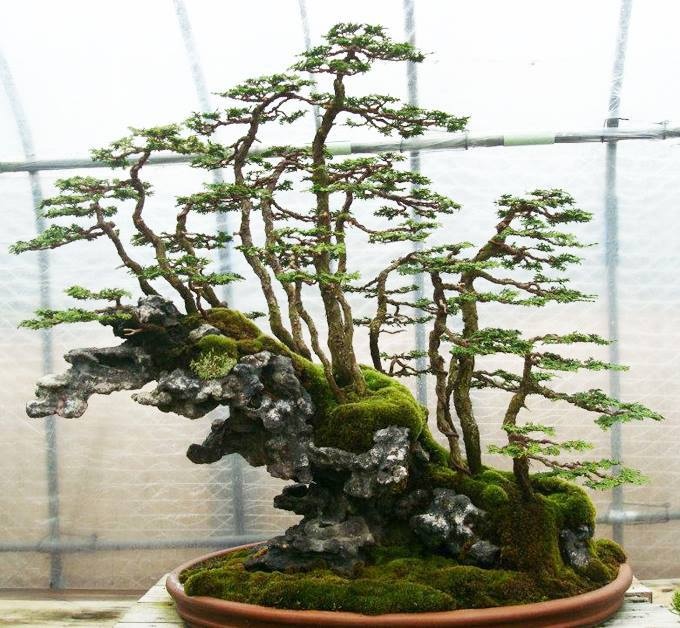Finding The Voice Of Your Bonsai Tree
Posted by Jason on 21st Apr 2015

When you bring a bonsai tree into your home, it's no mere houseplant. One of the things that makes bonsai trees special is that every one is unique, and every one could keep growing and changing for dozens or even hundreds of years.
The oldest known bonsai tree is over three hundred years old!
Every tree is special, and every tree has its own voice. The art of bonsai pruning, as it developed in Japan over the last thousand years, has become the art of finding the tree's own voice. The system of symbolism surrounding bonsai pruning helps you find it, and so nurture the tree into its own fullest expression.
What Your Bonsai Tree Is Telling You
The final shape your bonsai takes will be partially its own development, and partially your influence. Particular trees will be naturally inclined towards certain shapes, and you can help nudge them towards these shapes depending on how you care for them.
1 - Formal Upright
Suggesting noble strength and stability, the Formal Upright pose is most similar to trees in America - standing tall and straight upwards. Whether the foliage is rounded or clipped more severely into a pyramid shape is up to you.
2 - Informal Upright
This is like the Formal Upright pose, except the tree has a bend like a slight S-curve. The Informal Upright pose is often difficult to achieve unless the tree naturally tends towards it, so an Informal Upright bonsai is expressing its own personality. If your bonsai is Informal Upright, it's saying that it can stand strong even during change.
3 - Slanting
A Slanting bonsai is one where the majority of the trunk projects to the side at roughly a 45-degree angle, but with a large lower branch counterbalancing it on the opposite side. This is generally achieved by hanging the tree sideways during early growth. A Slanting bonsai demonstrates how balance can be achieved even in imbalanced situations.
4 - Windswept
Inspired by the trees that live along coastal regions, permanently blown to one side, the Windswept look conveys ageless endurance even in the face of powerful forces. This is much like a Slanting bonsai, except all the branches are deliberately cultivated in a single direction, following the slant.
5 - Cascade
This is another form that is difficult to achieve, but can have major effect on a room - the tree bends downwards so severely that its "upper" branches rest on the ground. While a few low-growing bonsai tree species achieve this naturally, it usually requires applied force during the tree's early growth. Thus, the Cascade tree tells a story of perseverance and the changes that come through struggle.
6 - Semi-Cascade
In the Semi-Cascade pose, your bonsai leans at a more extreme angle than in the Slanted form, but with a trunk that's straight enough to keep the leaves off the ground. Ideally, the "top" is just a bit below the soil line. This is another self-expressive trait, as the right trunk is difficult to deliberately mold. So, it speaks of strength even during times of hardship - bowed, but not broken.
The Best Bonsai Trees Have Personality
A bonsai tree is a living art form, a bit of the natural world brought into your home, and a storyteller revealing itself through its slow growth. If you carefully consider the shape your bonsai is trying to form, your pruning work can help bring out its true inner beauty and the message it wants to send to the world.
Want to find the right bonsai to match the personality of your home? Please contact the experts at Bonsai Outlet for suggestions!
